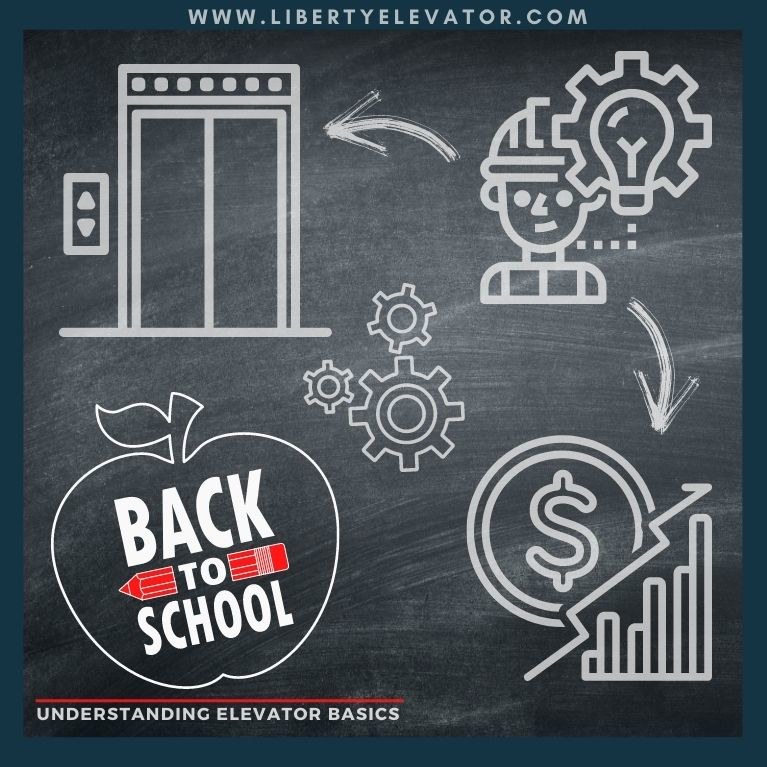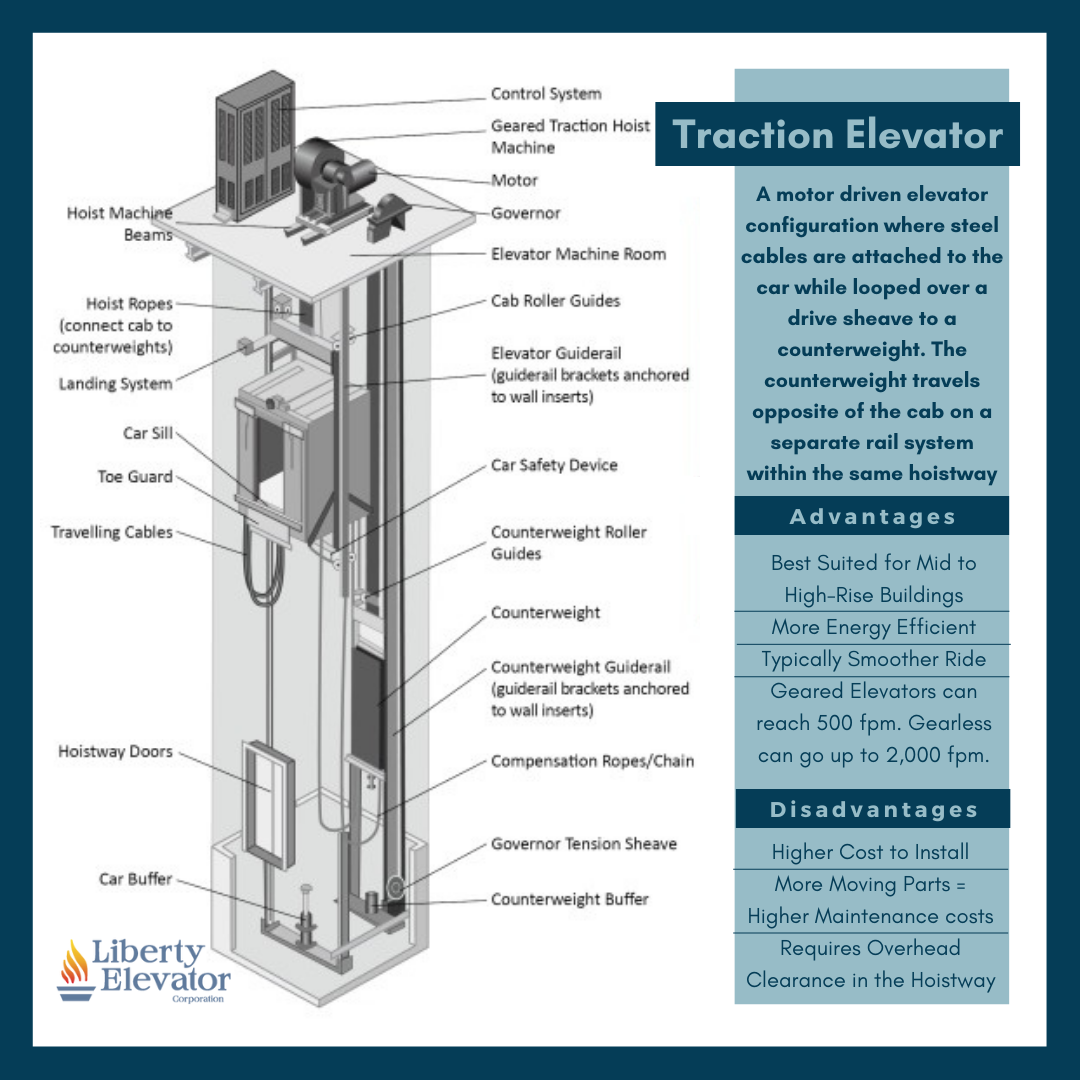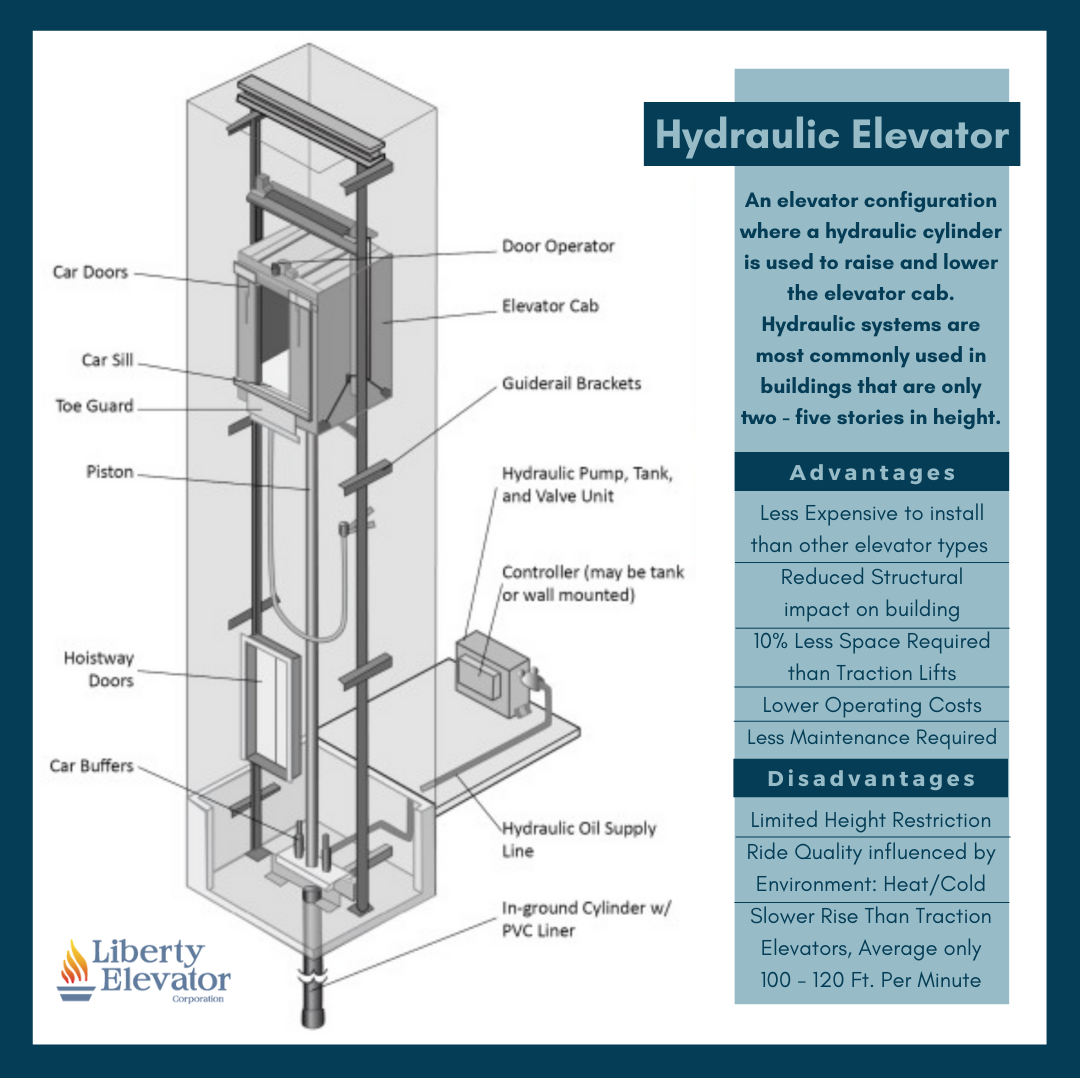Understanding Elevator Basics
There is an infinite amount of information to know when it comes to elevators and it can easily become overwhelming. In this series of Elevator 101 Educational Blogs, we intend to teach you the key information you need know in order to have an educated conversation about elevators, from basic componentry to determining the best elevator solutions for your property. Today, we start from the ground floor. What is an elevator and what types are there?
What is an Elevator?
An elevator is a type of vertical transportation equipment that efficiently moves people or goods between floors of a building. A modern-day elevator typically consists of a cab mounted on a platform within an enclosed space called a ‘shaft’ or ‘hoistway’ and is either pulled or pushed up by a mechanical means.
Elevators are generally powered by electric motors that either drive traction cables, a counterweight system like a hoist or they pump hydraulic fluid to raise and lower a cylindrical piston like a jack. In a "traction" elevator, the elevator cab is pulled up by means of ‘rolling’ steel ropes over a deeply grooved pulley, commonly called a ‘sheave’. The friction between the ropes and the pulley produces the traction which gives this type of elevator its name. Hydraulic elevators use ‘hydraulic’ principles of pumping fluid into a pressurized piston to raise and lower the car. These two core principles define most all elevator systems and can be combined in a manor such as the roped hydraulic elevator which uses a combination of both ropes and hydraulic power to raise and lower cars.
Traction Elevators
The most basic type of elevator is a traction elevator. Traction means, the elevator cab is connected to a counterweight via steel hoist ropes that ‘roll’ over a drive sheave which is attached to a gearbox driven by a high-speed motor to raise & lower the elevator cab. The movement is based on the friction of the rope on the motor pulley.
Geared Traction Elevators have a gearbox that is attached to the motor, which drives the wheel that moves the ropes. This is useful when using lower wattage motors that consume less power and reduce cost. Geared traction elevators are capable of travel speeds of up to 500 feet per minute, but geared machines are typically less efficient compared to the gear-less one.
Gearless Traction Elevators have the sheeve directly attached to the motor. Gear-less traction elevators are capable of speeds up to 2000 feet per minute. Gearless Traction elevators typically deliver a smooth and efficient ride while producing less sound.
Elevator Counterweight is an essential component of a traction elevator as it’s in place to help balance the cab in the hoistway, increases the friction of the ropes on the motor pulley / sheeve and to help reduce the power needed for the elevator motor.
Learn more about traction elevators: link
Hydraulic Elevators
The low mechanical complexity of hydraulic elevators in comparison to traction elevators makes them ideal for low rise, low traffic installations. Conventional hydraulic elevators use an underground hydraulic cylinder and are quite common for low level buildings with two to five floors and have speeds of up to 200 ft/min. Beyond installation cost, an advantage of a hydraulic elevator is that they can be configured in a variety of ways to take up a minimal footprint within a building and do not require additional overhead clearance, like a traction elevator does.
Holeless Hydraulic Elevators use a pair of above ground cylinders, which makes it practical for environmentally or cost sensitive buildings with two, three, or four floors.
Roped Hydraulic Elevators use both above ground cylinders and a rope system, allowing the elevator to travel further than the piston must move.
Learn More About Hydraulic Elevators: link
What is the Best Elevator for Your Building?
The best vertical transportation solution for your property is greatly influenced by a variety of factors. Hydraulic elevators are cheaper but installing cylinders greater than a certain length becomes impractical for longer travel needs. For buildings over six floors, traction elevators may be your only option. Hydraulic elevators are typically much slower than traction elevators but can more easliy move heavy freight. If you have a high traffic property that requires moving people or goods fast and frequently, a traction elevator system could be more advantageous.
Based on countless factors, including your architectural drawings, your property’s environmental requirements, elevator usage patterns and user experience, Liberty Elevator Corporation can help you select the best elevator solution for your property.
Learn More With Liberty Elevator
As one of the top elevator companies in New Jersey, New York, Pennsylvania & Florida, Liberty Elevator understands that customers have the freedom to choose. Whether choosing a customized elevator maintenance program, installing nonproprietary equipment, or providing a flexible agreement, Liberty Elevator offers knowledgeable recommendations for various models and vintages of elevator equipment.
Although there are many choices as to the right elevator for you situation, there is little decision as to who is the best elevator provider for your property. To continue your higher education, contact Liberty Elevator today.
Educational Blog Links |
|
| Traction Elevators | Hydraulic Elevators |
| Freight Elevators | Automobile Elevators |
| Elevator Life Cycle | Elevator Services |
Reference: Elevator Basics - Wikipedia
Reference: How Elevators Work




